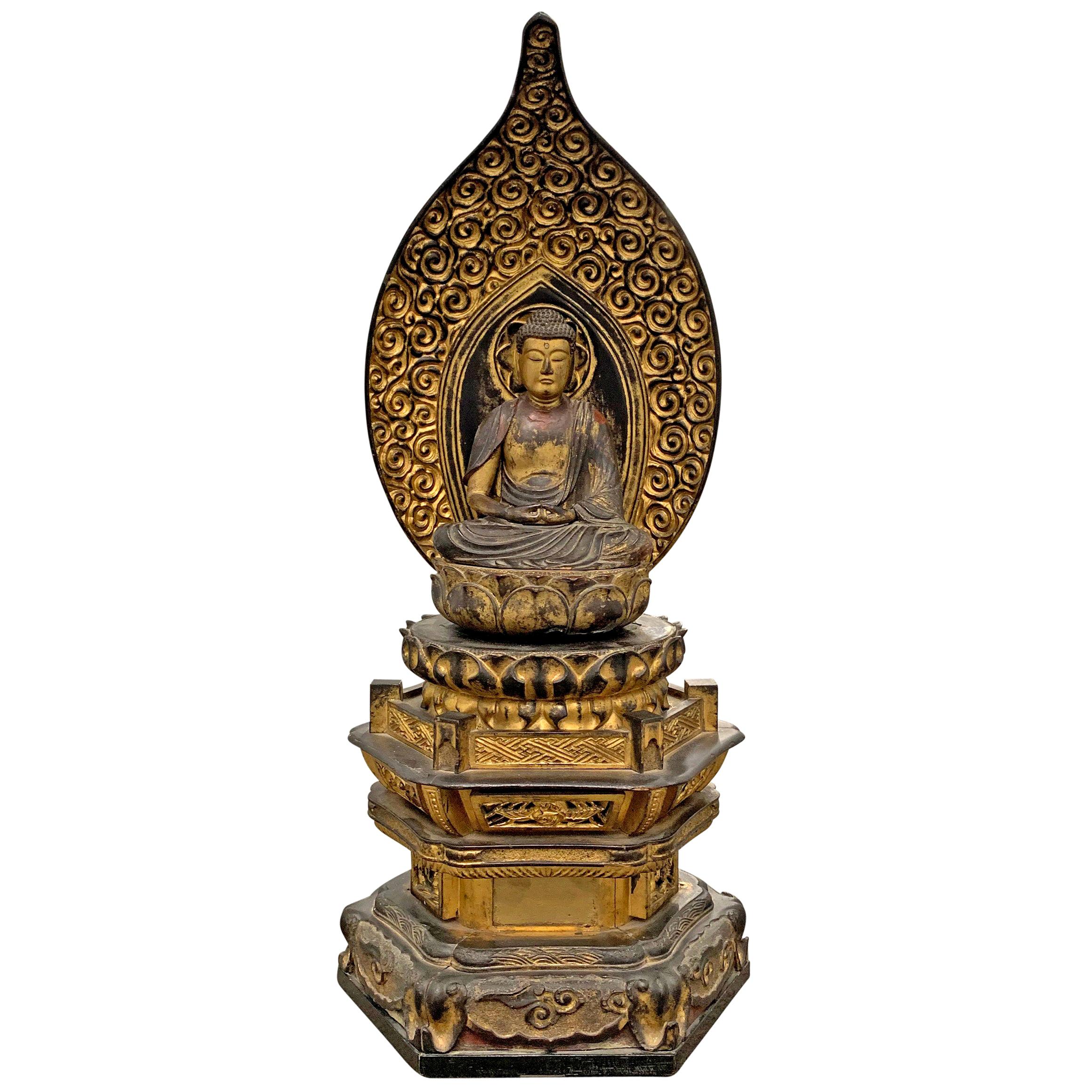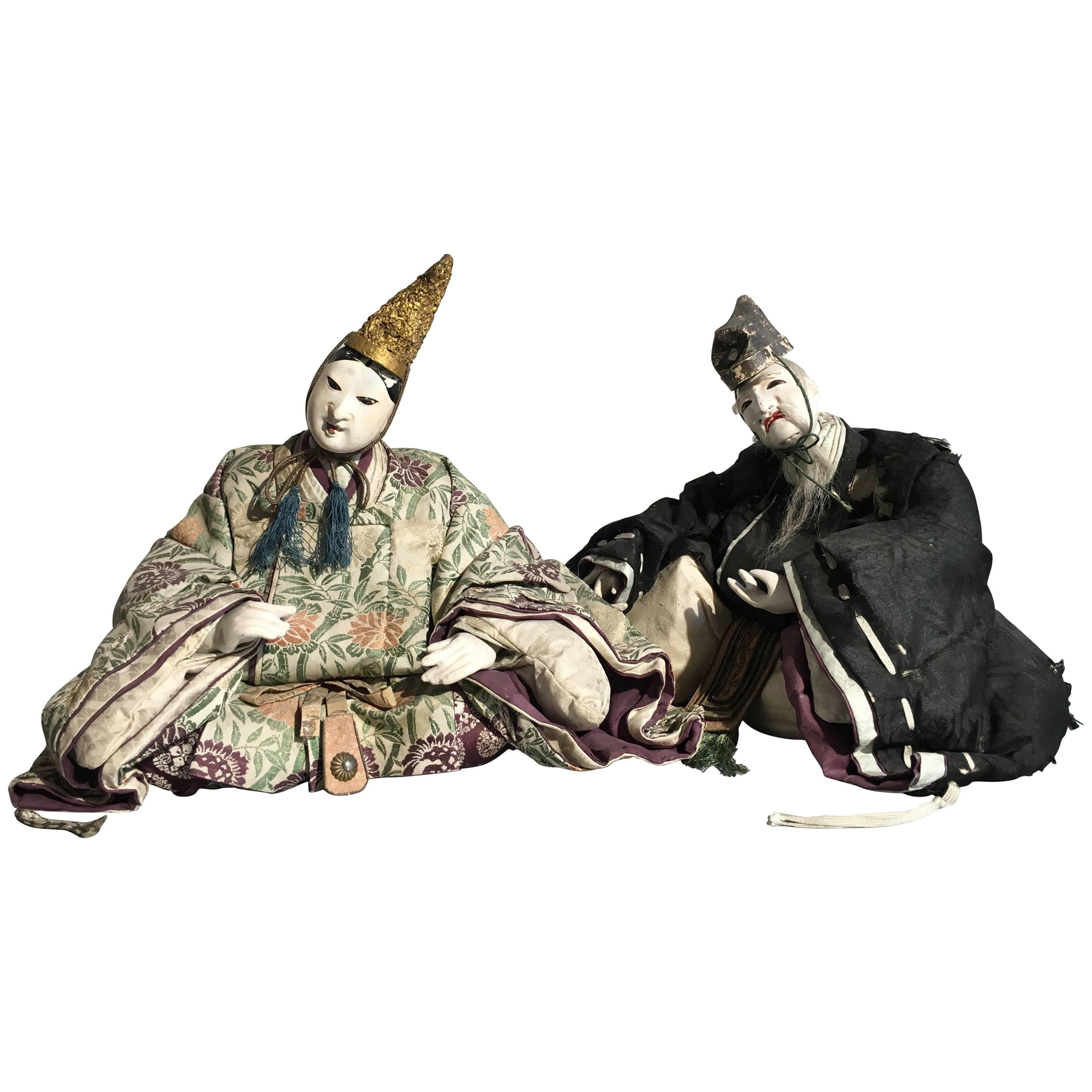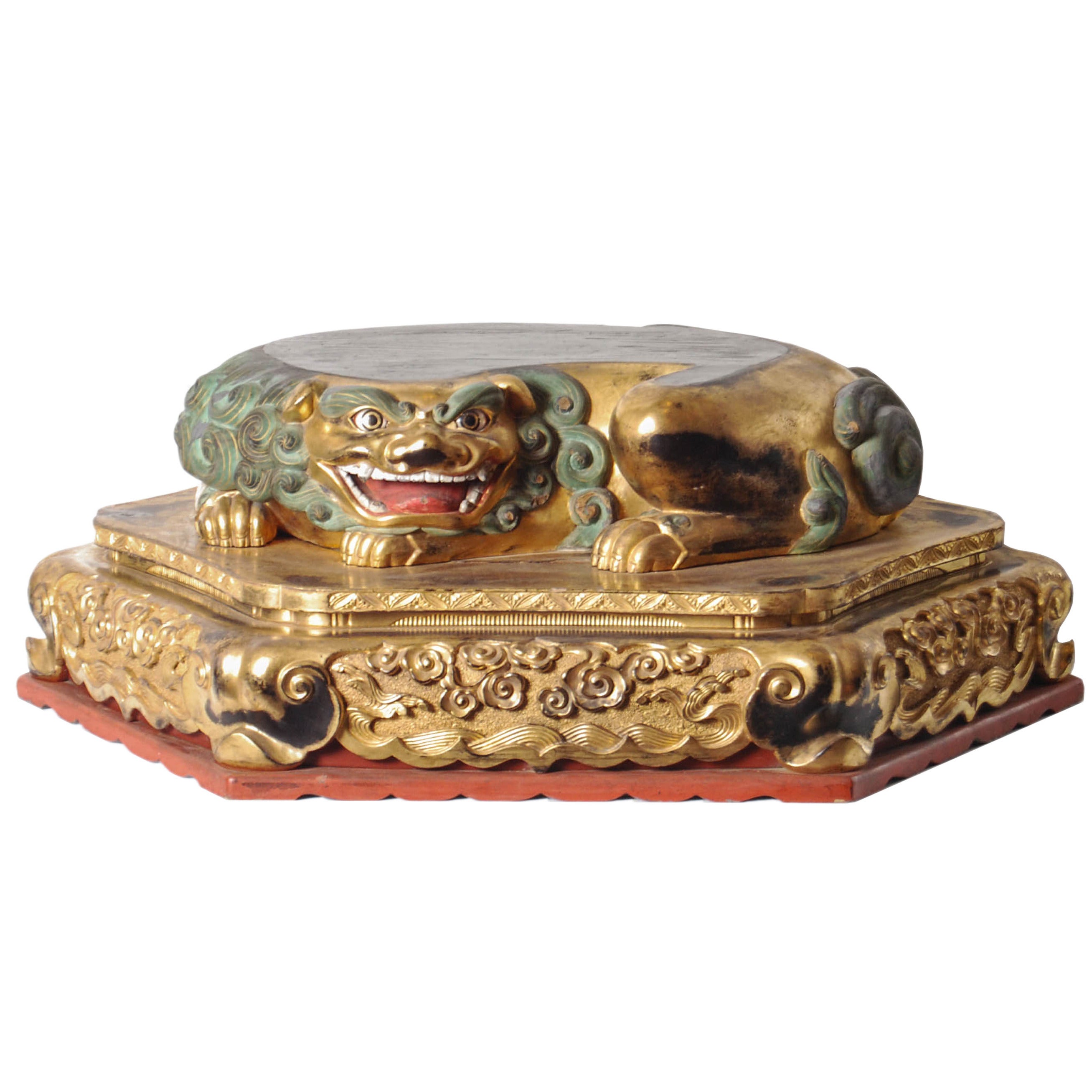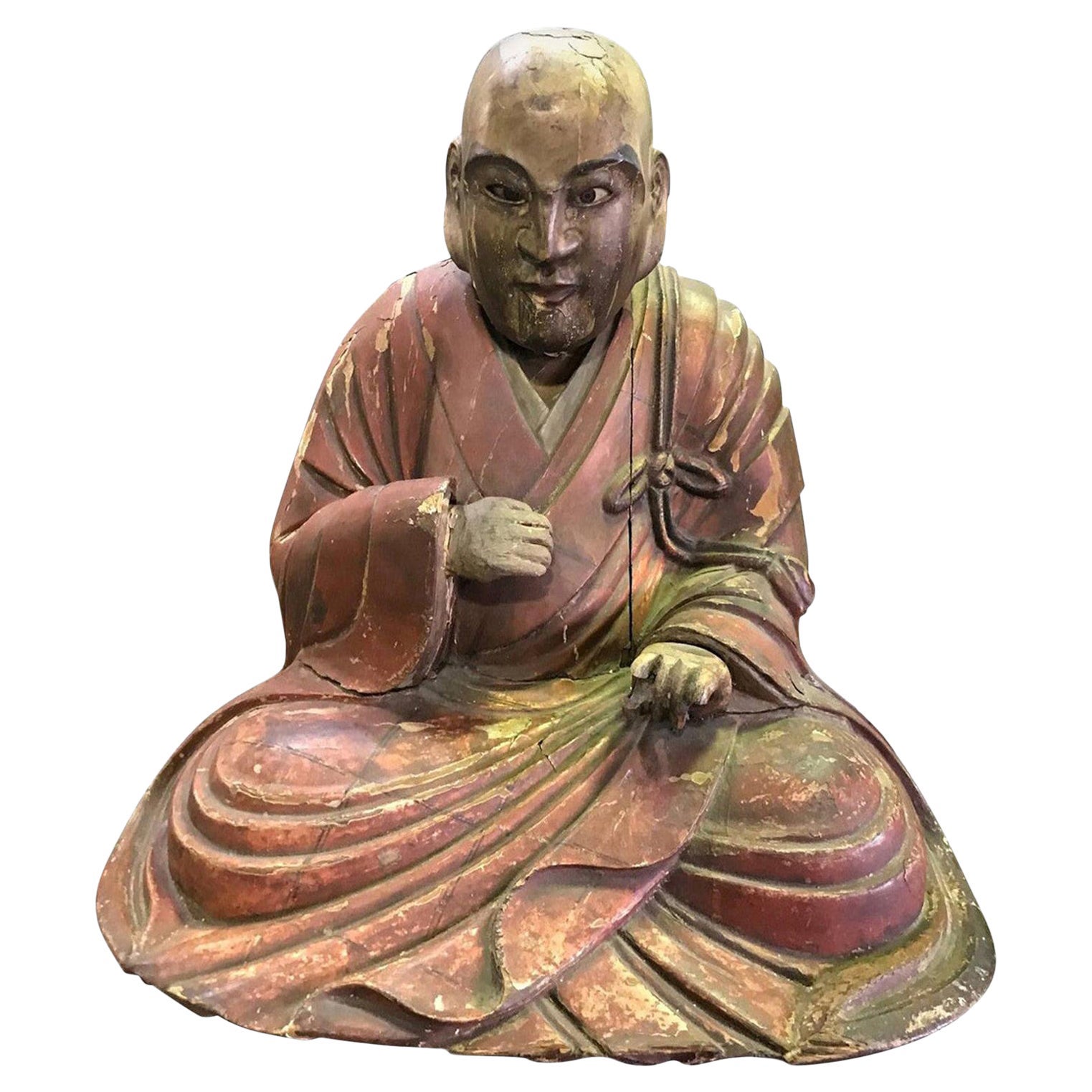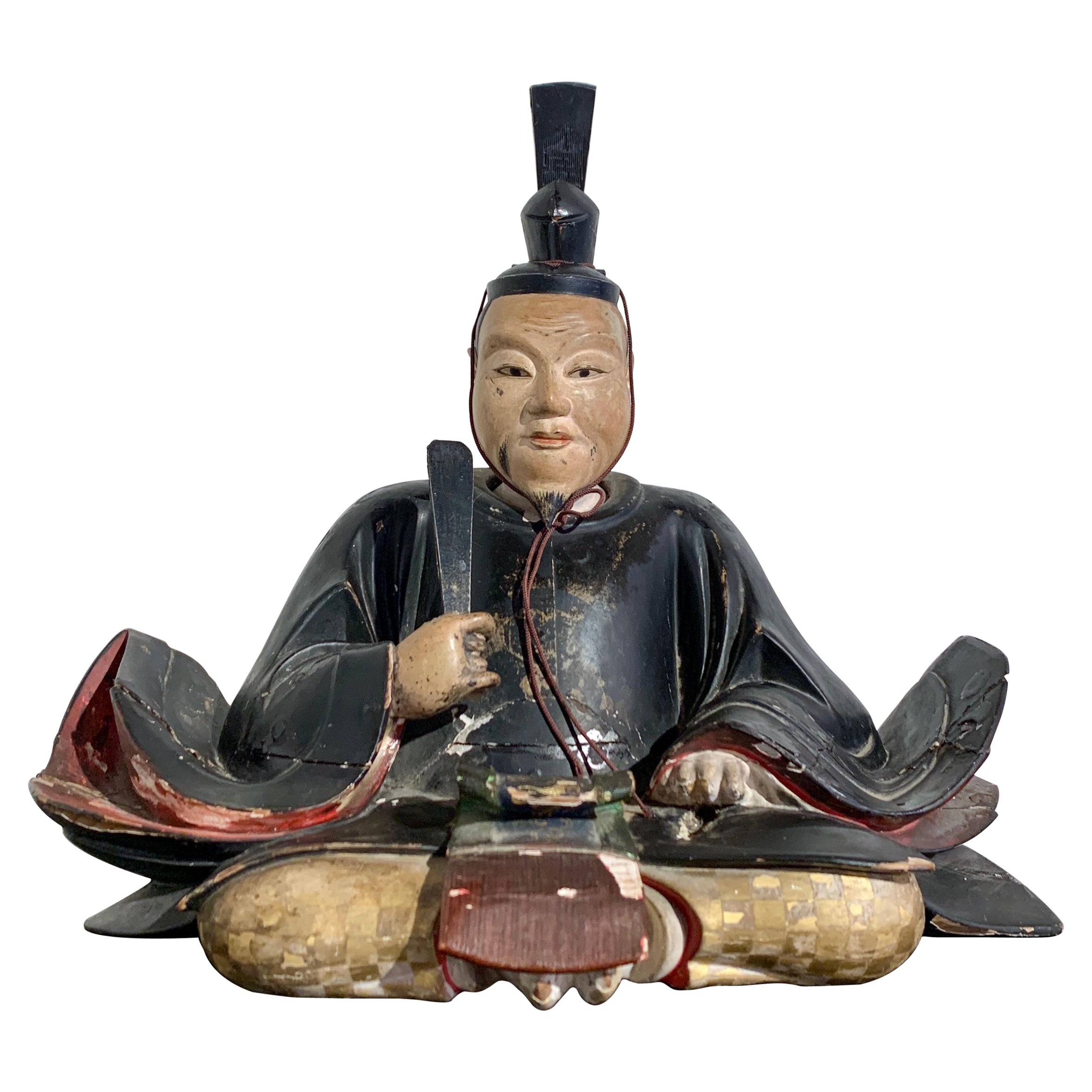Items Similar to Kitsune from the Edo Period
Want more images or videos?
Request additional images or videos from the seller
1 of 9
Kitsune from the Edo Period
About the Item
According to Japanese folklore the fox, or kitsune, can assume human form to protect and trick humble country folk. Dating to the 18th century, this fox protects its own pup. Carved and painted with a dull black lacquer finish called urushi, it’s pleasing from every angle, and is in its way a small masterpiece. The sweeping curve of the snarling fox’s body is countered by the undulations of the playful pup. These generalized forms are countered by finely carved details, like the pupils in slit eyes, the sharp teeth and nails, and the tiny paws that sink into a luxuriant tail.
The sculpture was in the collection of Lucy Truman Aldrich of Providence, Rhode Island. Most of her Japanese works were purchased from Yamanaka, then a four-hundred-year-old firm in Osaka, Japan, with branches in New York, Cleveland, Bar Harbor, and Newport (which was only a few miles from Truman's country estate). Over the years Yamanaka cataloged her burgeoning collection, and on the underside of our sculpture is a label that bears her initials and an inventory number.
Aldrich was born, lived, and died in her family’s mansion on Benevolent Street. In the 1930s she gave her collections of Asian textiles and European porcelains to the Rhode Island School of Design Museum. Her remaining treasures passed down through the family of her sister, Abby Aldrich Rockefeller, the modern art collector and one of the founders of the Museum of Modern Art.
Lucy was a spinster, a bluestocking, and deaf, but she was no drudge. She traveling through Asia in search of treasure while wearing Paris couture and Cartier jewelry. One night in 1923, on a Peking-bound train, she and her fellow passengers were kidnapped by bandits, marched off in bedclothes, and held for ransom. Two weeks later she escaped in a rainstorm, and hid in a farmer's doghouse. On returning to Providence, it was assumed she’d learned her lesson that a woman’s place is in the home. But when the Chinese government paid her compensation, she booked passage on her next Asian buying trip. By of way of an explanation to the shocked locals she remarked, “I’d rather be a Buddhist than a Baptist.”
- Dimensions:Height: 9.5 in (24.13 cm)Width: 6.5 in (16.51 cm)Depth: 5 in (12.7 cm)
- Materials and Techniques:
- Place of Origin:
- Period:
- Date of Manufacture:circa 1750
- Condition:Wear consistent with age and use.
- Seller Location:New York, NY
- Reference Number:1stDibs: LU1061414794251
About the Seller
5.0
Recognized Seller
These prestigious sellers are industry leaders and represent the highest echelon for item quality and design.
Established in 1994
1stDibs seller since 2014
19 sales on 1stDibs
- ShippingRetrieving quote...Ships From: New York, NY
- Return PolicyThis item cannot be returned.
More From This SellerView All
- Elegant Japanese Edo Period RackLocated in New York, NYThis refined object dates to the first half of the 19th century, and was probably used for obi, kimono sashes, which were hung over it. The gold decorations on the black-lacquered g...Category
Antique 1830s Japanese Edo Lacquer
MaterialsLacquer
- 18th Century Giltwood Sculpture of a Female NudeBy Michelangelo BuonarrotiLocated in New York, NYThis giltwood sculpture was carved in the round, probably in southern France or northern Italy in the 1760s. Her pronounced musculature speaks to the ongoing influence of Michelange...Category
Antique Mid-18th Century French Neoclassical Mounted Objects
MaterialsBronze
- Large 1920s Danish Porcelain SculptureBy Arno MalinowskiLocated in New York, NYThis 1927 Royal Copenhagen porcelain sculpture is exceptionally large in scale, and appears to represent an Amazon with her hound. It is remarkable for the...Category
Vintage 1920s Danish Neoclassical Revival Figurative Sculptures
MaterialsPorcelain
- 1920s Swedish Grace SculptureLocated in New York, NYThis abstract 1920s Swedish sculpture of painted-and-gilded plaster, on a painted-wood base, is pleasing from all angles. At the time and place where it...Category
Vintage 1920s Swedish Modern Abstract Sculptures
MaterialsPlaster, Wood
- American Arts & Crafts Sculpture of a Pelican, Circa 1910Located in New York, NYThe unknown sculptor of this fine, gilded-mahogany pelican appears to have been influenced by the turn-of-the-century Symbolist movement in Europe. The breast feathers are subtly car...Category
Antique Early 1900s American Arts and Crafts Animal Sculptures
MaterialsWood
- Two Japanese Bronze ShellsLocated in New York, NYThese charming bronze shells were cast in Japan in the 19th century. They lived for many years in the collection of the Paris artist Pierre Le-Tan. One of...Category
Antique 19th Century Japanese Edo Scholar's Objects
MaterialsBronze
You May Also Like
- Japanese Lacquered and Gilt Wood Buddhism Statue from Edo PeriodLocated in Atlanta, GAAn exceptional and wood statue of Buddhism Guardian Seitaka Doji from Japan circa Edo period (1603-1868), likely the earlier part of 17th century. One of two chief attendants of Fudo...Category
Antique 17th Century Japanese Japonisme Sculptures and Carvings
MaterialsMetal
- Edo Period Japanese Bodhisattva ShrineLocated in Chicago, ILAn incredible Edo Period Japanese gilt and lacquered carved wood shrine depicting a Bodhisattva with piercing glass eyes, a contemplative expression, and h...Category
Antique Early 1800s Japanese Japonisme Sculptures and Carvings
MaterialsGiltwood, Wood, Lacquer
- Pair of Japanese Edo Period Musha Ningyo Courtier DollsLocated in Austin, TXTwo exquisite Japanese musha ningyo dolls, crafted as courtiers, Edo Period, early 19th century, Japan. The older man can be identified as the h...Category
Antique Early 19th Century Japanese Edo Sculptures and Carvings
MaterialsShell, Brocade, Silk, Glass, Wood, Paint, Paper
- Rare Buddhist Carved Base for a Statue, Edo Period, 17th CenturyLocated in Prahran, VictoriaRare and unusual hexagonal Buddhist base for a statue with a recumbent shi-shi (guardian lion dog), gilded and carved with inset glass eyes and painted with mineral pigments. Most likely the base to a sculpture of Monju Bosatsu...Category
Antique Mid-17th Century Japanese Edo Animal Sculptures
MaterialsWood
- Japanese Wood Carved Polychrome Sculpture of a Seated Temple Monk, Edo PeriodLocated in Studio City, CAThis is truly a wonderful piece with clear age and a nice patina to it. Very unique. We have not seen another quite like it. The monk appears to have glass eyes which gives his expression a very humanistic feel. The head is removable (please see the last image). From a collection of Japanese arts and artifacts. Most likely dates back to the Edo period. Would make for a nice addition to any Japanese or Asian artifacts...Category
Antique 18th Century Japanese Edo Sculptures and Carvings
MaterialsWood, Lacquer
- Japanese Carved and Lacquered Wood Shogun, Edo Period, 19th Century, JapanLocated in Austin, TXAn unusual Japanese carved wood, lacquer, and gilt decorated portrait sculpture of a shogun, Edo Period, early 19th century, Japan. The unidentified shogun (possibly Tokugawa Iey...Category
Antique Mid-19th Century Japanese Edo Sculptures and Carvings
MaterialsWood, Lacquer
Recently Viewed
View AllMore Ways To Browse
Japanese Buddhist Carving
Paw Jewelry
Antique Cartier Jewellery
Antique Cartier Jewelry
Cartier Antique Jewellery
Cartier Antique Jewelry
Antique Japanese Folk Art
Island Counter
Counter Island
China Circa 1750
1930s Cartier Jewelry
Hundred Treasures
Small Wood Counter
Cartier Curved
Cartier Lacquer
Old Used Sinks
Cleveland Antique Furniture
Antique Furniture Cleveland

